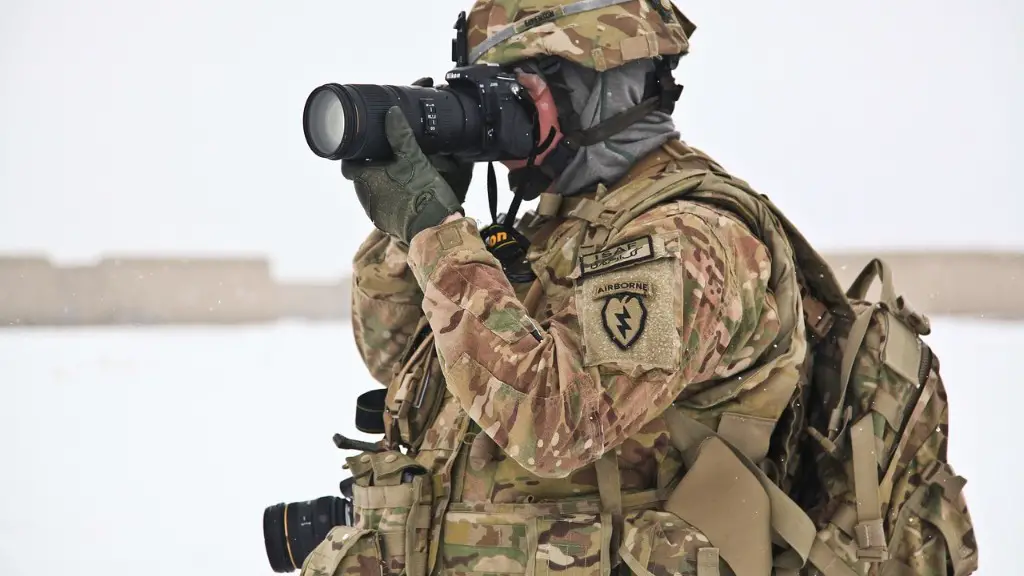Size and Strength of the Chinese Army
The size and strength of the Chinese Army is on the rise. In 2012, the People’s Liberation Army (PLA) had an active-duty personnel number of 2,285,000 according to the International Institute for Strategic Studies. This number remains larger than the U.S. military and numerous other nations around the world. Additionally, the PLA is supported by 800,000 reservists. The Chinese military is further supported by large amounts of military equipment. The organization is armed with artilleries, aircraft carriers, tanks, frigates, submarines, assault helicopters and ballistic missiles. This large military force has forced other nations to take notice of China’s power.
Economic Impact
The Chinese military also holds an economic advantage over other nations in terms of the annual military expenditure. According to the Stockholm International Peace Research Institute (SIPRI), China’s expenditure was estimated to be $166 billion per year while the U.S. expenditure was approximately $664 billion. After the People’s Republic of China was founded in 1949, the main objective of the military was to defend the nation from foreign threats. However, as the economy of China began to expand and the government started transitioning to a market economy, the military began to take an active role in economic development and possible expansion.
Geopolitical Concerns
The rapid military growth of the Chinese military has caused a great deal of geopolitical concerns among neighboring countries and within the international community. Many countries in the East Asian region have begun to arm themselves with more and more military equipment in an attempt to deter possible threats from the Chinese military. This arms race in East Asia and the buildup of military activity has caused potential US allies to strengthen their own military in order to legally contain such possible tactical movement by the PLA.
Regional and Global Powers
Despite the concerns expressed by a majority of countries in the East Asia region, the Chinese military continues to expand in size and strength in an effort to dominate the region and become a global superpower. As the tensions between the US and China further escalate, all eyes will be on China’s military activity, while still maintaining dominance in their own sphere of influence. As China seeks to establish a hegemonic power, the threat of a military conflict is possible and even more tension will be created as China continues exert geopolitical influence.
Current Status
In recent years, the People’s Republic of China has been steadily modernizing its equipment and improving training of the military. The country has further been acquiring technology from Russia, with both nations seeking to benefit from this partnership. This is evidenced by Russia’s willingness to sell heavily advanced military equipment that includes AWACs, aerial refueling tankers, and jet fighter aircrafts, to name a few.
Furthermore, China is continuously reshaping its geopolitical standing with nations in the region, while remaining an active participant in international treaties. This demonstrates that China is committed to building diplomatic ties, while still demonstrating a willingness to increase its military strength when deemed necessary. In 2012, the PLA focused on modernizing its land, naval and air force capabilities to eventually become a major superpower and counterbalance US military activity.
Beijing’s Expansionism
Notwithstanding the fact that Beijing still has a long way to go in terms of military strength and the economy, the country continues to occupy strategic islands in the South and East China Sea, indicating that the Chinese military is actively looking for ways to grow its presence outside its borders. Although the PLA has yet to enter an armed conflict with its regional neighbors, the fear of a possible confrontation still lingers.
This can be observed from the regional powers such as Japan and South Korea that are seeking increased defense budgets to counter the growth of the Chinese military. In this regard, it can be seen how the size and strength of the People’s Liberation Army are increasing and causing geopolitical concern among the nations in the region.
Envoys and International Relations
Beijing has also sought to increase its soft power through the deployment of envoys worldwide, thereby attempting to shape the international discourse in order to portray China’s views. These activities have given Chinese diplomats unfettered access to multiple foreign capitals, where they can negotiate and build ties with local governments. The international relations that result from these engagements may also open the way for military cooperation, which can further increase the size and strength of the Chinese military.
Beyond diplomacy, China also seeks to shape the international order through its military presence by providing assistance to countries in need, as well as to strengthen its presence beyond its own borders. The military contribution to a joint effort in combating piracy in the Gulf of Aden, as well as its recent commitment in response to the 2018 United Nations peacekeeping operations abroad, has only served to further increase the size and strength of the Chinese military.
Presence in the Disputed Territories
The PLA has also sought to increase its presence in the South and East China Sea, where it has involved itself directly in the territorial disputes in the area. This has led to multiple instances of military actions and threats by the Chinese forces towards local nations, including the creation of artificial islands with their territorial waters in the South China Sea, against which the international community has reacted in a myriad of ways. Although the military presence of the PLA in these areas has caused an increased level of tension, it has also demonstrated the power of the Chinese military to the regional powers.
Implications of Expansion
The rise of China’s military is a major concern for other nations in East Asia and in the international community. The large size and strength of the Chinese Army has enabled the PLA to act on a global scale and become a superpower, resulting in a destabilizing effect on the international order. The expansion and modernization of the People’s Liberation Army have caused an arms race in the East Asia region and beyond, resulting in increased military expenditures by other nations and a potential threat of conflict.
Chinese expansion and military strength have come at a price, as other nations, including the US, must take steps to contain the Chinese military activities. This has led to increased sanctions and stricter enforcement of international law as a response, leaving China’s military potential weakened and its standing in the region reduced.
Military Prowess
As of 2012, the size and strength of the Chinese Army remain impressive, with more than two million active personnel and 800,000 reservists. Additionally, the PLA is better armed than ever before, with access to advanced technologies and weapons. This power has put China at the center of the global geopolitical stage, allowing the country to compete for global leadership in the 21st century.
Although the international community and other regional powers are concerned with Chinese expansionism, the sheer size and strength of the People’s Liberation Army will make it one of the predominant forces in the global military arena for years to come.


